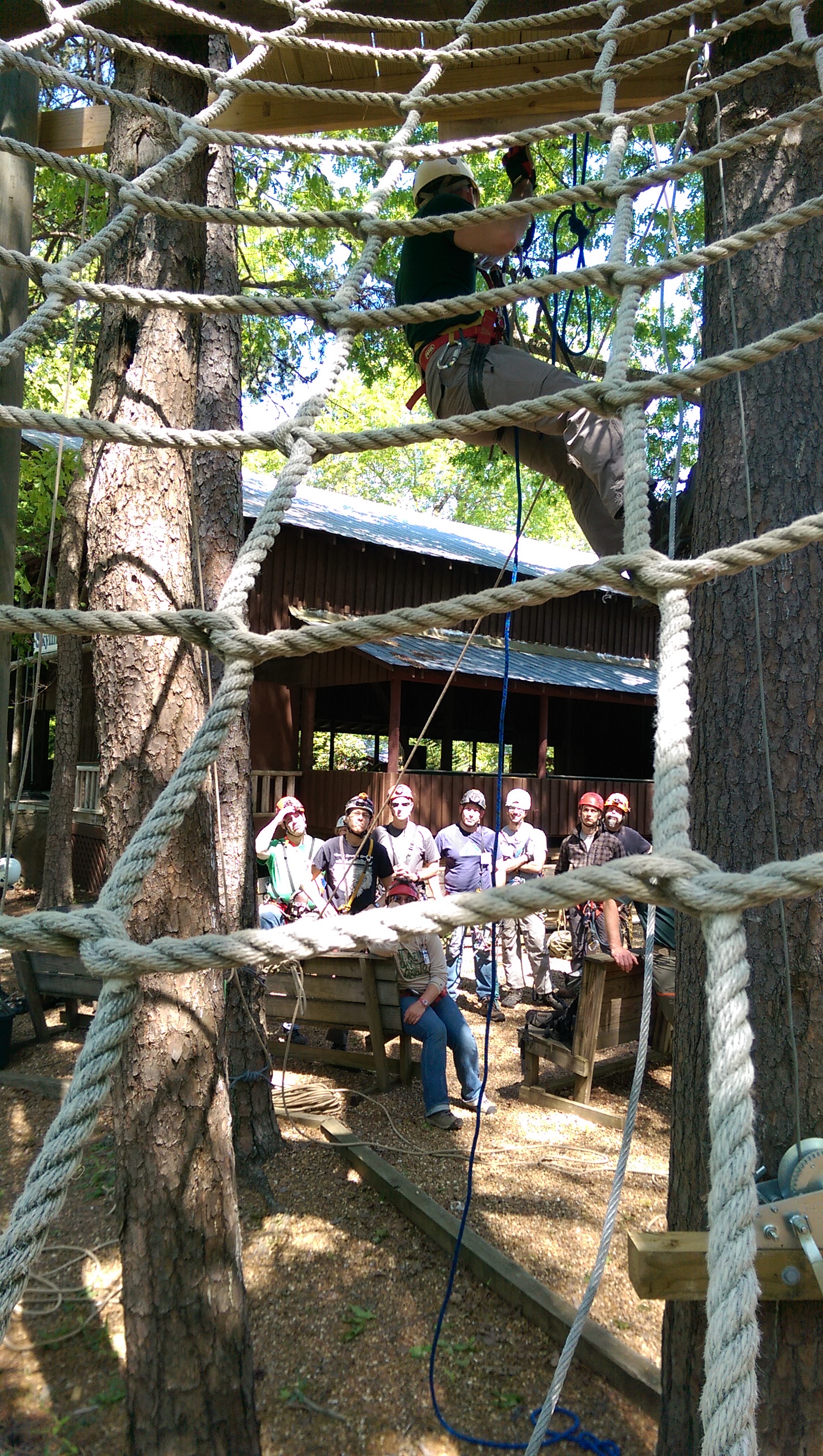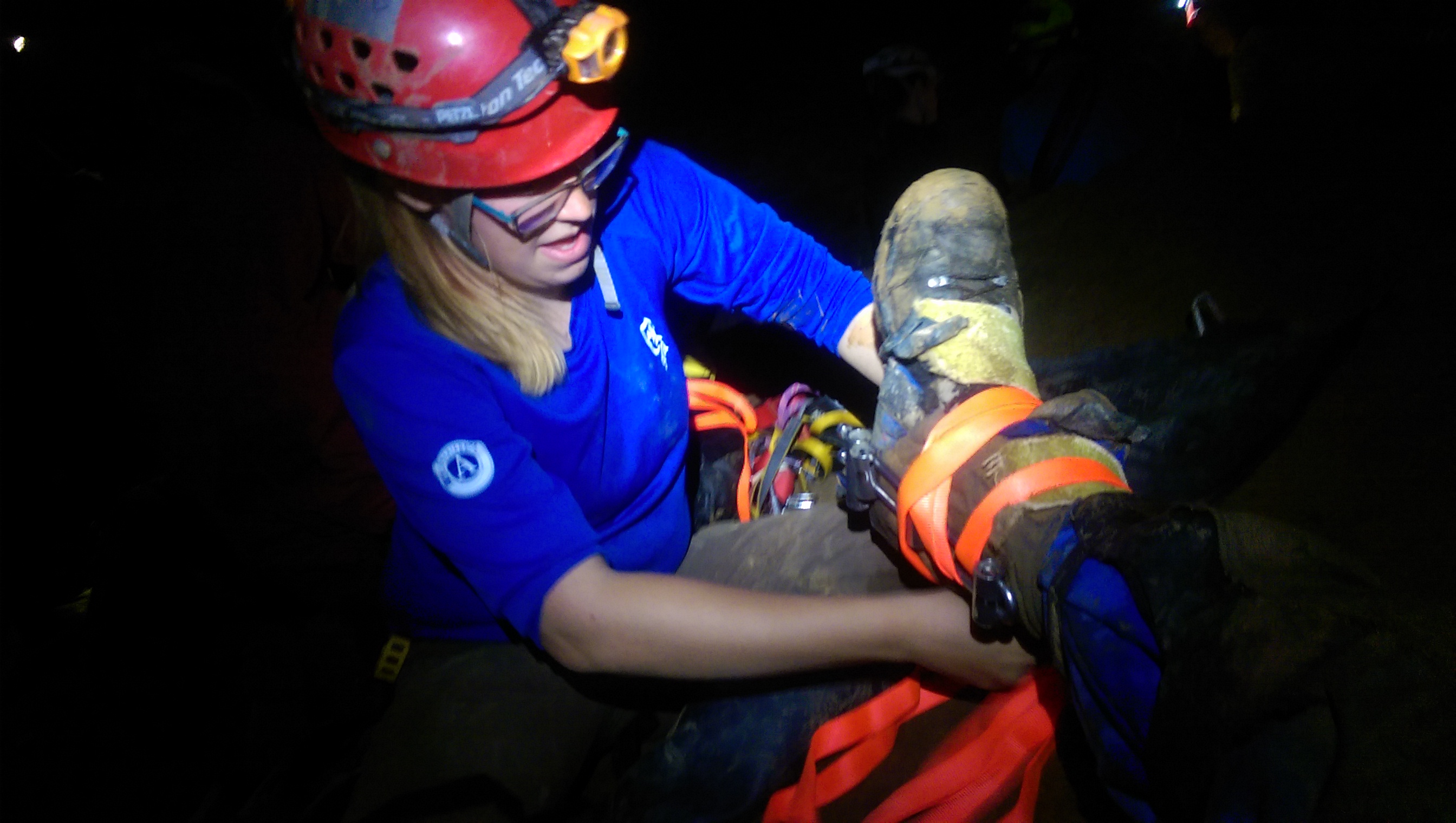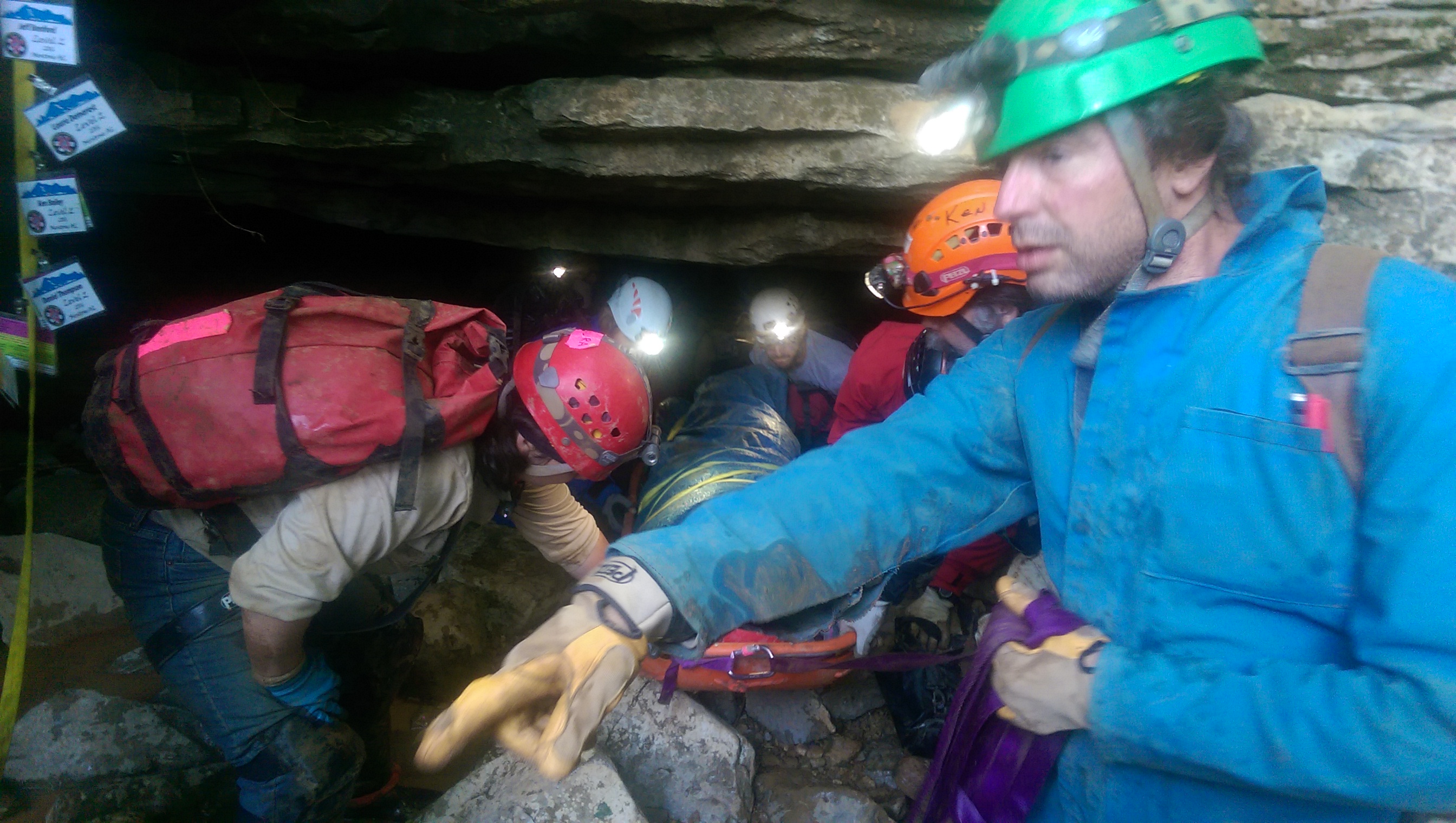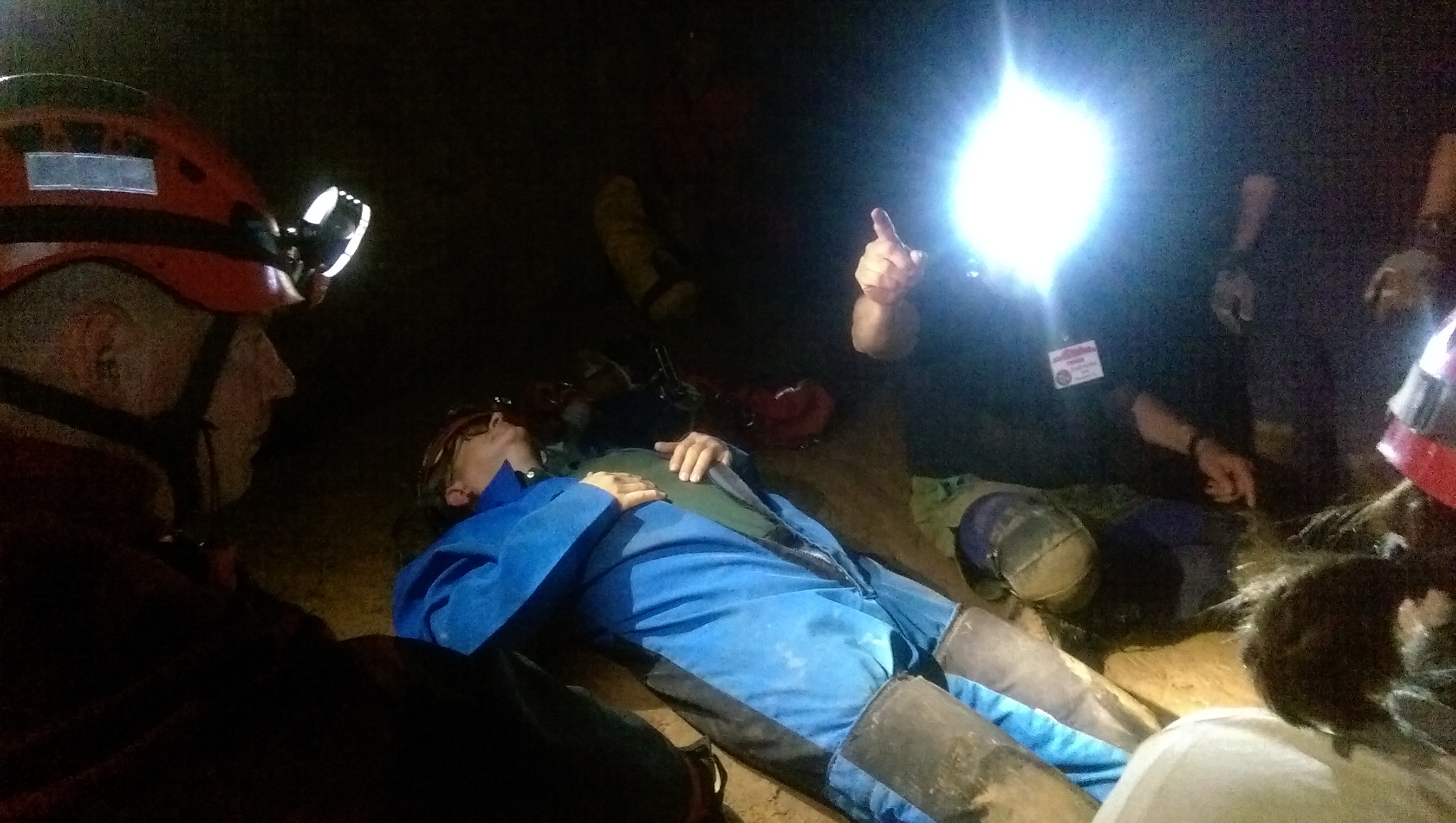
Well, it’s only day 2 of my NCRC training, and my Advil supply is already running low. I’m often finding myself flashing back to Marine Corps boot camp, since the training days here are run in a strikingly similar fashion. You train non-stop all day, with short breaks for hurriedly ingested meals.
In caves, hypothermia is ALWAYS a major consideration with even the most simple of rescues. As a result, we spend a lot of time dealing with hypothermia related issues.

Today we went to a nearby cave (there are a million of them in this area), and worked on cave search techniques, Incident Command, communications, medical considerations and patient packaging. Some of the training was even accomplished vis an in-cave powerpoint displayed on the cave ceiling. Back at the camp, we practiced some more SRT (Single Rope Technique) by doing a series of rebelays, which are common in vertical caves.
And as if all this wasn’t hard enough, we continue to make our way through the checkoffs that are required of our level. These checkoffs, performed in the evening until 10 pm or so, are timed to simulate the fatigue and mental fog that accompanies all cave rescues. We were checked off on our ability to run, troubleshoot and splice the wire required for cave phone use during rescues. We were tested on our ability to thoroughly assess an injured caver’s medical concerns, and using cave vertical gear off our harnesses for improvised extremity splints. Lastly, we were evaluated on our ability to package a patient in both a SKED and a plastic Ferno litter for vertical evacuation. If our patient slips down more than 2 inches when we stand the litter on end, we fail. Happy to say that neither of our packaged patients slid an inch.
Martin was busy moving through his level one skills practices and lectures. At level one, most of what you need to know about cave rescue is fired at you in rapid, machine-gun like fashion, and learning to work as a group to complete even basic rescues with total strangers is its own challenges. But Martin, a native of Wales who now calls the States home and is visiting Alabama for the first time, is already comfortable dealing with strange-mannered people who talk funny-namely, us.


Wrapping up our day at roughly 10:30 p.m., many of the other 90 plus cavers and cave rescue instructors gathered around the fire to practice knots
and tell caving war stories (most of which are probably true) till the wee hours in the morning.
Day 3 will likely bring more punishment and learning opportunities, so I’d best wrap it up for the day.
Tom Wood
Training Manager, PMI’s Vertical Rescue Solutions
Email: twood@pmirope.com
Website: www.verticalrescuesolutions.com
Cell: 303-829-4468
Office: 303-800-1708 EXT 1451









6 thoughts on “Day 2 2016 National Cave Rescue Commission training in Mentone, Alabama”
Great write-ups, I’m loving this blog! Looking forward to reading about what happens when your Advil supply is gone. 🙂
Solid! My thoughts exactly. Thanks for touching base.
Lance
498112 930239so a lot great info on here, : D. 443939
231401 8580Billiard is a game which is mostly played by the high class men and women 281484
769251 494884This is actually intriguing, You are a really skilled blogger. Ive joined your rss feed and look forward to seeking a lot more of your magnificent post. Also, Ive shared your internet site in my social networks! 207928
840765 84150Excellent post, thank you so considerably for sharing. Do you happen to have an RSS feed I can subscribe to? 675522
Comments are closed.